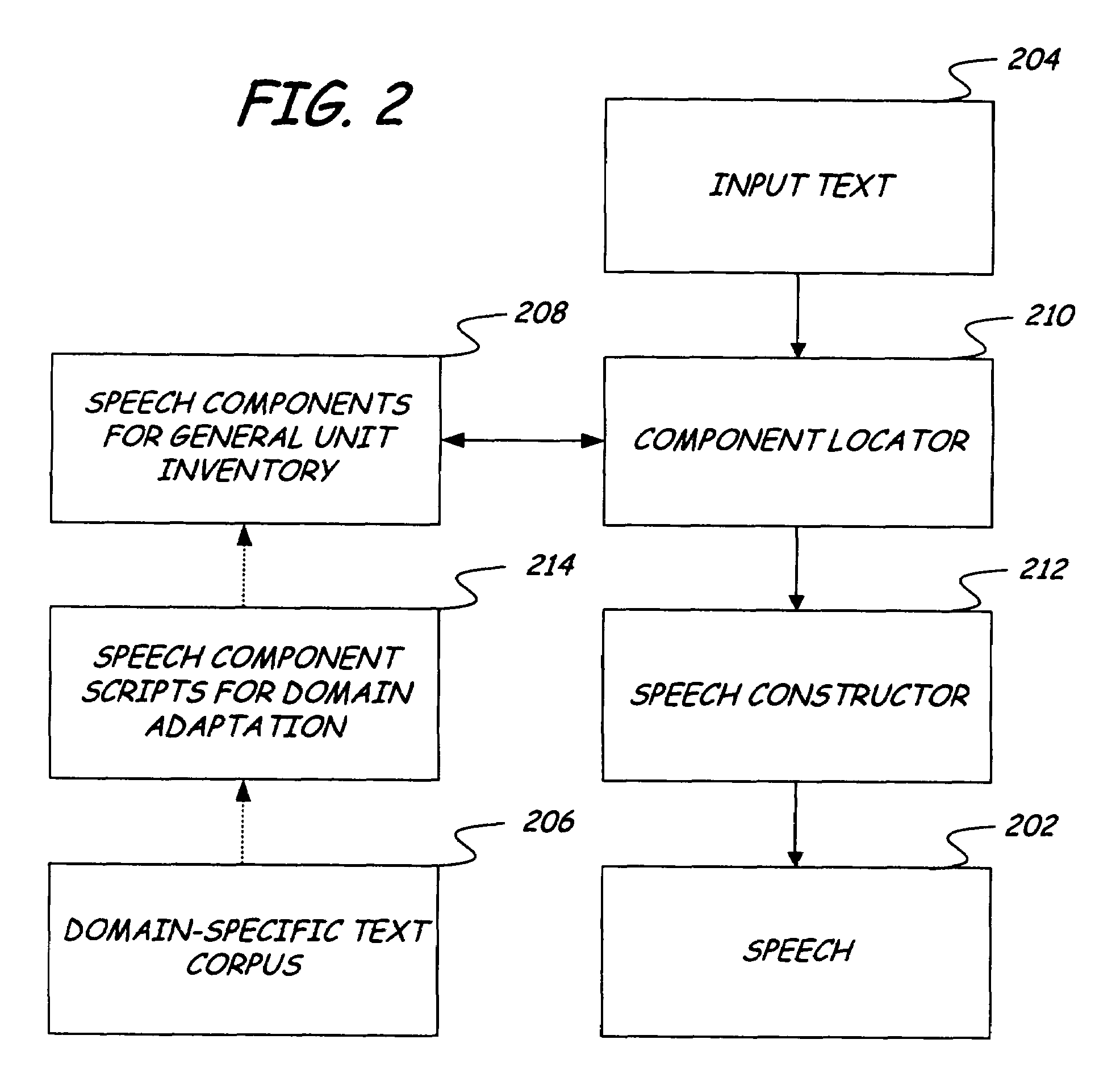Domain adaptation for TTS systems
- Summary
- Abstract
- Description
- Claims
- Application Information
AI Technical Summary
Benefits of technology
Problems solved by technology
Method used
Image
Examples
example
[0059]A sentence with N Chinese characters is denoted as C1C2 . . . CN. It is to be segmented into M (M≦N) sub-strings, all of which should appear at least once in Ug. Though many segmentation schemes exist, only the one with the smallest M is what is searched for. In fact, it turns out to be a searching problem for the optimal path, which is illustrated under the DP framework in FIG. 7. Node 0 represents the start point of a sentence and nodes 1 through N represent character C1C2 . . . CN respectively. Each node is allowed to jump to all the nodes behind it. The arc from node i to node j represents the sub-string Ci+1 . . . Cj. A distance d(i j) is assigned for it utilizing equation (2) below. Each path from node 0 to N corresponds to one segmentation scheme for stringing C1 . . . CN. The distance for each path is the sum of the distances of all arcs on the path. Let f(i) denote the shortest distances from node 0 to i and g(i) keeps the nodes on the path with f(i). Then g (N) with ...
PUM
 Login to View More
Login to View More Abstract
Description
Claims
Application Information
 Login to View More
Login to View More - R&D
- Intellectual Property
- Life Sciences
- Materials
- Tech Scout
- Unparalleled Data Quality
- Higher Quality Content
- 60% Fewer Hallucinations
Browse by: Latest US Patents, China's latest patents, Technical Efficacy Thesaurus, Application Domain, Technology Topic, Popular Technical Reports.
© 2025 PatSnap. All rights reserved.Legal|Privacy policy|Modern Slavery Act Transparency Statement|Sitemap|About US| Contact US: help@patsnap.com



